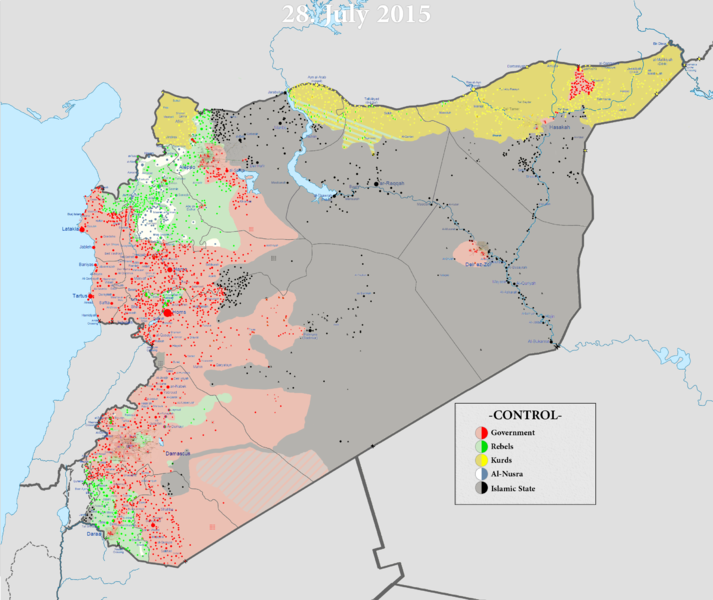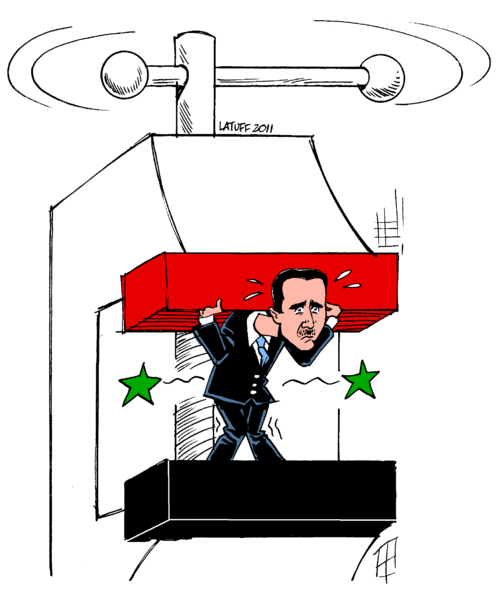Guest post by Evan Perkoski

Contemporary irregular conflicts often share a common feature: they are fragmented. States are not facing just one enemy but instead they are facing many, and these actors often have their own internal conflicts as well. Sometimes these organizations hold broadly similar goals, as is the case with Syrian militants who are opposed to the Assad regime. Elsewhere, groups have developed in stark opposition to one another: for example, in Iraq in the mid-2000s when Shiite and Sunni militant groups proliferated to directly counter the other. This type of fragmentation is consequential: there is abundant research to suggest that fragmented conflicts play out in very different ways, with unique patterns of violence and implications for civilians.
Despite the prevalence and impact of fragmentation, academic research and debate has overlooked the origins of fragmentation that has very obvious implications for the conflict landscape. Rather, we ignore how situations like Iraq – with opposing groups like AQI and Jaysh al-Mahdi – are different from Syria, where groups have cooperated to take down Assad. Although these conflicts look similar from the outside because they involve a plurality of violent nonstate actors, when examined more closely they are in fact very different.
In my ongoing research I propose four separate ways that actors can proliferate and create “fragmented” conflicts: first, organizational proliferation; second, organizational decentralization, third, organizational specialization; and fourth, organizational splintering. Although each of these pathways ends with the creation of new militant actors, they all exhibit very different institutional arrangements and, ultimately, have different implications for academics and policy-makers.
Organizational proliferation, the most common variant, refers to strategic or ideological movements that develop new players from the ground up. There can be oppositional fragmentation when new groups develop that oppose existing organizations, or there can be peer fragmentation when new groups develop that share similar goals and vie for dominance over the movement as a whole. Oppositional fragmentation will often result in direct, intergroup conflict, while peer fragmentation is more likely to witness the type of indirect outbidding that is associated with groups competing for local support. Shiite and Sunni militias in Iraq exemplify oppositional fragmentation, whereas peer fragmentation can be seen in Syria with the numerous groups that initially formed to take down Assad.
Organizational decentralization is the devolution of group autonomy that often results in new, semi-independent organizations in other countries. Militant groups decentralize their operational networks for a variety of reasons, most commonly to reduce their exposure to state security operations since flat, decentralized networks are harder to defeat. Militant groups will also decentralize as they expand since maintaining strict hierarchy across large swathes of territory combined with a need for secrecy is extremely difficult to balance. The best example of organizational decentralization is, of course, Al Qaeda, with semi-independent affiliates in various countries around the Middle East and North Africa.
Organizational specialization occurs when militant groups create specialized, semi-autonomous sub-groups that remain broadly under the control of the parent group. A militant organization might create one of these groups for two reasons: first, their supporters might not condone more radical operations (like suicide bombing campaigns) so an armed wing provides a level of deniability that nonetheless produces the desired tactical capabilities. And second, groups will form armed wings to create avenues for more radical supporters to join their organizations. For example, scholars argue that both of these rationales help explain why Fatah formed groups like Tanzim and the Al Aqsa Martyrs Brigade. Notably, both specialization and decentralization should neither produce direct nor indirect competition between groups as they often share both personnel and resources.
Organizational splintering refers to existing members of a nonstate group breaking away to establish a new group that is entirely independent. These new groups form with experienced, knowledgeable members that can seriously augment group capabilities, capacity, and durability. Though there any many examples of this, splits among the Irish Republican Army are noteworthy, producing the Continuity IRA, the Real IRA, and many others. Not surprisingly, organizational splintering will often result in both direct and indirect (outbidding) conflict between the old and new organizations. Organizational splintering is also unique in that these internal disagreements provide important information about the trajectory and future behavior of these splinters.
Although these different pathways will not perfectly capture every situation, they nonetheless underscore how there are various ways to arrive at a fragmented conflict that will each generate very different situations on the ground. Many of these pathways will also take place simultaneously in the same conflict. In such cases, understanding how these actors came to be can have important consequences for US foreign policy: some proliferation could potentially provide new allies for the US abroad, while other types might be more susceptible to selective incentives or divide-and-conquer approaches.
Applying this framework to Syria illustrates the utility of this approach. Early in the civil war there were significant cases of peer fragmentation producing dozens of new organizations that shared similar goals. This included organizations like the Al-Qassas Army, the Revolutionary Army, Jaysh al-Islam, and many others. Although the framework above suggests little chance of direct conflict between groups in this situation, they are more likely compete over resources to become the dominant player – which is indeed what happened. Instead of supporting many of these organizations, providing weapons and training to a wide range of moderates, the United States should have chosen to back a single peer to create unity since parity might actually increase outbidding behavior as groups seek to gain an advantage. Reducing internal jockeying and indirect competition also would have enabled the opposition to concentrate on their true adversaries and their ultimate objectives. Then, partially as a result of their limited success, oppositional fragmentation soon followed, generating pro-Assad militants that further threatened their security. These organizations are especially dangerous as they use the same irregular tactics and strategies as the anti-Assad militants. Ultimately, this has two effects: first, opposition forces now face a greater threat, underscoring the need to prevent internal competition; and second, potential approaches to protect anti-Assad forces (e.g. no fly zones) will be comparatively less effective as they will do little against irregular foes.
Interestingly, two of the groups that have been most effective in the Syrian Civil War were born out of organizational decentralization: ISIS (from AQI) and Al Nusra (AQ). These types of groups are better equipped and more capable as they can draw on the experience of hardened militants and also the support of well-established organizations abroad. Furthermore, as both groups had ties to Iraq, they were able to use the country as a safe haven when needed. As such, preventing the spread of established organizations should be a top priority.
Overall, when comparing fragmented conflicts around the globe we should carefully consider how these groups have proliferated and what that means for the actors, civilians, and states involved. Indeed, disaggregating fragmented conflicts to consider precisely how they evolved into their current state can generate important insight that can ultimately improve US foreign policy.
Evan Perkoski is a PhD candidate in political science at the University of Pennsylvania and a predoctoral research fellow at the Belfer Center for Science and International Affairs at the Kennedy School of Government, Harvard University.







6 comments
Thanks for sharing Evan! Fascinating research here. I would love to hear more about how ISIS is decentralized – seems that the process was the inverse, with fractioned Sunni groups actually organizing into a hierarchy and consolidating strategy. Is this not the case? If it is the case, how does your theory work with ISIS?
Thanks Joel. I’m not claiming that ISIS itself is decentralized. Rather, what I’m trying to highlight is that ISIS isn’t simply a nascent organization that sprung up in Syria after the Civil War began. Instead, its experience and successes in Iraq as AQI have provided them with expertise, connections, and rear bases that they could draw upon as they expanded into Syrian territory – something that entirely new organizations would be lacking. I would argue that this information is crucial to understanding their trajectory and indeed their success, and if we merely viewed ISIS as simply another party in the conflict we would be overlooking their meaningful organizational history.
I think some of the confusion might come from calling this pathway organizational “decentralization” and instead something like transformation might be more appropriate. As I’m still in the early stages of thinking through this I’m very much interested in any suggestions that you (or anyone else) might have.
I think Staniland’s written on the different social origins of rebel groups and its impact on their wartime nature, while Christia’s written on the behavior of rebels in making alliances in wartime, whether it be ideological or ethnic-focused violence.
Reblogged this on STRATSIGHT and commented:
Intriguing analysis